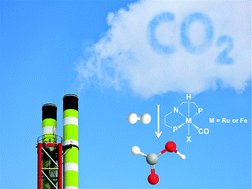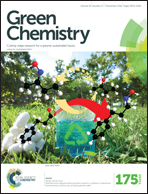CO2 capture by amines in aqueous media and its subsequent conversion to formate with reusable ruthenium and iron catalysts†‡
Abstract
Conversion of carbon dioxide (CO2) captured from industrial sources (e.g. flue gas of power plants) or even from ambient air to value-added chemicals/fuels through CO2 capture and utilization (CCU) as a possible strategy to mitigate anthropogenic CO2 emissions to the atmosphere is proposed. In this context, combining the CO2 capture and utilization steps to generate fuels instead of going through the intermediate desorption and compression of captured CO2 has started to attract considerable interest as a way to lower the energy demand for the CO2 recovery processes involved in usual carbon capture and storage/sequestration approach. The main focus of this study is CO2 capture in aqueous amine solutions and conversion of the in situ formed ammonium carbamate/bicarbonate/carbonate to ammonium formate. The amines selected for this process served the dual purpose of capturing CO2 and stabilizing the formate product. The captured CO2 was selectively converted to formate (up to 95% yield) using, among others, superbases, in the presence of Ru- and Fe-based pincer complexes under moderate reaction conditions (50 bar H2 at 55 °C). By performing a biphasic reaction (water/Me-THF), the catalyst was recycled for five consecutive cycles and a TON > 7000 was obtained for the formation of ammonium formate from captured CO2. Overall, a green and straightforward approach to produce formate from captured CO2 is presented here.


 Please wait while we load your content...
Please wait while we load your content...